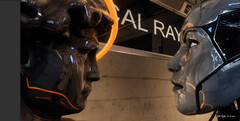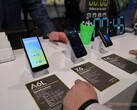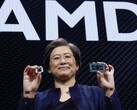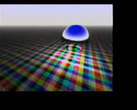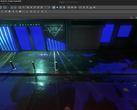It may seem hard to believe, but Israeli company Adshir claims that their "LocalRay" ray-tracing software solution can power ray-tracing experiences on 2W smartphones. LocalRay was presented this year at CES 2020. An impressive real-time demo showcased the GTX 1080 Max-Q (a non-RTX desktop GPU), apparently running LocalRay ray-tracing demos at 60 FPS.
Adshir was founded by Dr. Reuven Bakalash, who patented several ray-tracing solutions, a number of which are utilized in LocalRay. The software ray-tracing solution reportedly uses an "algorithmic approach" with a dynamic data structure that responds to changes in the scene. From this description, it appears as if the solution may utilize culling of some sort to optimize ray-tracing performance.
Adshir indicates that its solution is cross-platform. Barring iOS, major mobile and PC operating systems are supported. Remarkably, the company claims that the technology will enable real-time ray-tracing on "2W smartphones."
Adshir stated that other companies have expressed an interested in utilizing LocalRay. Right now, it isn't clear exactly how they plan to commercialize their solution. However, if they take the middleware route, we may see LocalRay appear in games built on mainstream engines like Unity and Unreal 4. LocalRay-powered ray-tracing in mobile games may arrive sooner than expected.
Adshir's executive VP, Offir Remez, stated that they have "multiple deals across console and mobile sectors." This hints at the possibility of LocalRay being utilized in upcoming ninth-gen titles.
We're still far from the point of assessing whether or not LocalRay works in practice, how it performs, and the exact trade-offs it makes vis-a-vis hardware ray-tracing solutions. We should learn more in the months to come and will update you accordingly.


